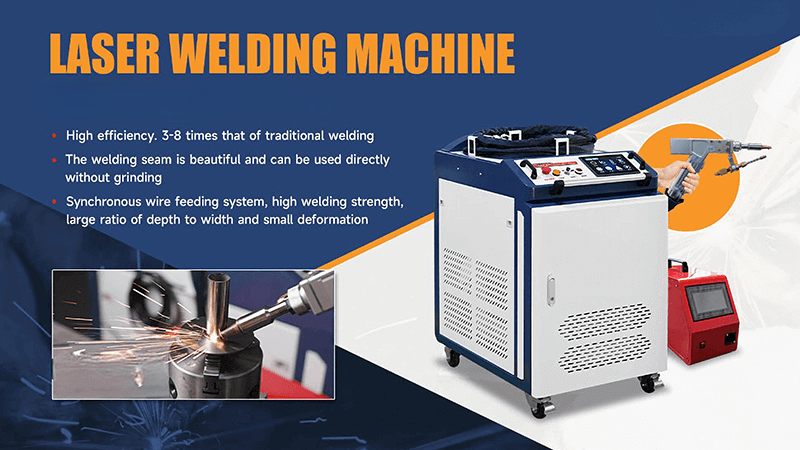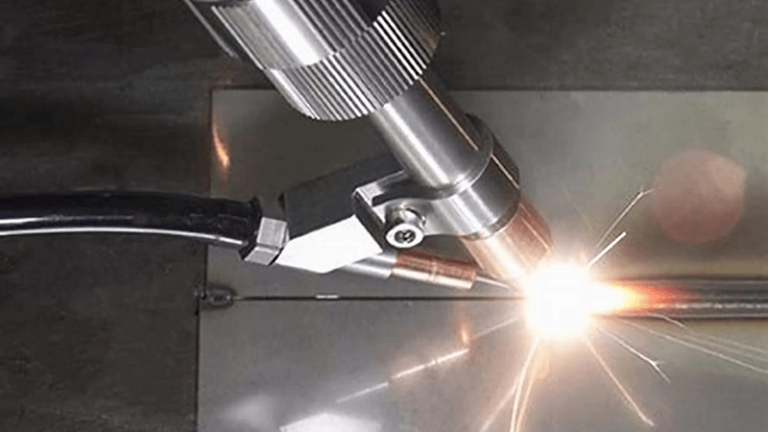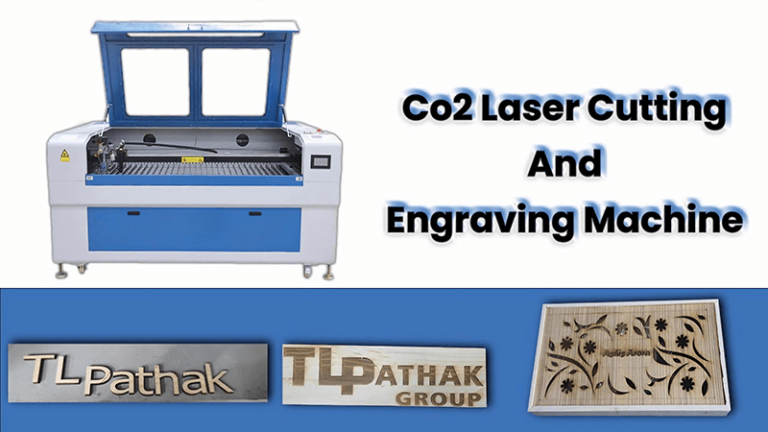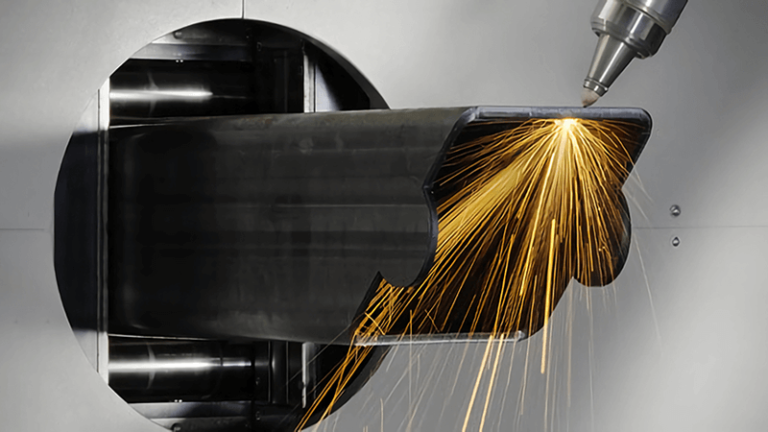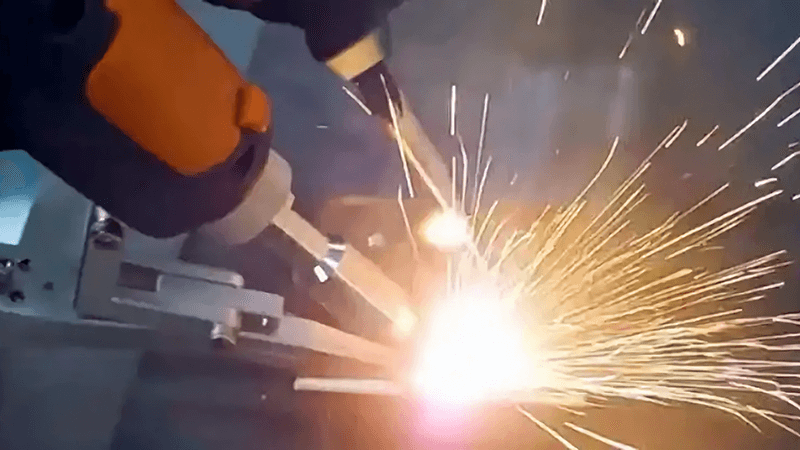
When it comes to welding, it’s easy to imagine the sparks flying and the loud noise of the traditional welding machines. But there’s a quiet revolution happening—one that doesn’t involve noisy, messy equipment. You may have heard of laser welding, but you might not realize how dramatically it's changing the industry.
Laser welding is revolutionizing various sectors within the manufacturing industry, offering unparalleled precision, speed, and efficiency. This advanced technology is reshaping traditional welding processes, leading to significant improvements in product quality and production capabilities.
So, what exactly makes laser welding such a game-changer, and why should you care? Well, let me break it down for you in simple terms.
Laser welding is not just the future—it’s the now.
Let’s face it: traditional welding methods often involve a lot of mess, heat, and inefficiency. But, with laser welding, the process is cleaner, faster, and much more precise. Imagine the difference between cutting a sheet of metal with a dull knife versus using a sharp blade—it’s that level of precision. This innovation is revolutionizing industries from automotive to aerospace, electronics to medical device manufacturing. It’s safe to say that the welding world will never be the same again.
This innovative technique leverages high-intensity laser beams to join materials, offering significant advantages that are reshaping how products are made. Laser welding is not just a futuristic concept; it is actively redefining manufacturing processes today. By offering unparalleled precision, speed, and versatility across various materials, this technology is revolutionizing industries from automotive to medical devices. As companies continue to adopt laser welding techniques, the efficiency and quality of production are expected to improve significantly, making traditional welding methods increasingly obsolete.
Laser welding machines are noiseless and cleaner than traditional welding machines.True
Laser welding is a quiet process that reduces noise and mess, unlike traditional welding.
Laser welding technology has not had any significant impact on the welding industry.False
Laser welding is dramatically changing the welding industry by offering quieter, cleaner, and more precise alternatives to traditional welding methods.
Industry Applications by Laser Welding
Laser welding has found extensive applications in multiple industries:
- Automotive: Used for joining body panels, exhaust systems, and battery components in electric vehicles. Its precision helps enhance structural integrity and fuel efficiency.
- Aerospace: Essential for fabricating critical components like turbine blades and fuselage sections, where lightweight and high-strength materials are paramount.
- Electronics: Employed in microelectronic assemblies and circuit boards, laser welding ensures reliable connections in compact designs.
- Medical Devices: Ideal for assembling surgical instruments and implantable devices, laser welding provides sterile and hermetic seals that minimize contamination risks.
- Semiconductors: Increasingly used in assembling semiconductor packages and sensors due to its precision and ability to handle delicate components.
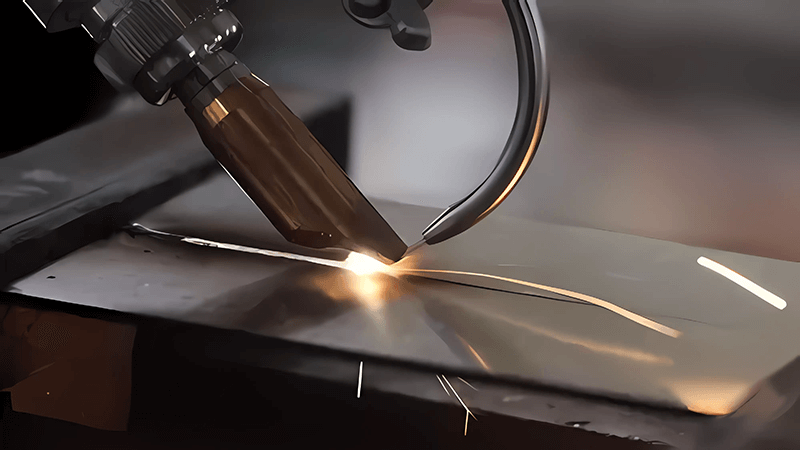
What is Laser Welding and Why Does it Matter?
To understand how laser welding is changing the industry, let’s take a step back. Laser welding uses a high-powered laser beam to melt and fuse materials together. The laser is focused on the material, and the heat generated causes the parts to join at the atomic level. This precision results in stronger, more durable welds with minimal heat-affected zones. Traditional welding methods often rely on mechanical force and higher temperatures, which can distort materials and cause defects.
With laser welding, we’re able to achieve highly controlled results, which is critical for industries where quality and precision are non-negotiable. Whether it's for a delicate electronics circuit or the structural integrity of an airplane fuselage, laser welding provides a solution that is faster, more efficient, and with fewer chances for error. And who doesn’t want that?
Three Kinds of Laser Welding Machine
- Handheld Laser Welding Machines
Handheld laser welding machines are compact, portable devices designed for ease of use and versatility. They are ideal for both professionals and beginners due to their user-friendly design.
- Ease of Use: These machines can be learned quickly, often within 5 to 30 minutes, making them accessible even to those with minimal experience. If you can use a hot glue gun, you can operate a handheld laser welder.
- Speed and Efficiency: Handheld lasers can achieve welding speeds that are 2 to 5 times faster than traditional methods like MIG or TIG welding. They are capable of welding various materials, including stainless steel, aluminum, and titanium, with minimal deformation.
- Applications: They are suitable for a variety of joint types such as edge, butt, tee, corner, and lap joints. The portability allows for use in diverse environments—both industrial and outdoor.
- Safety Features: These welders produce very little flash or brightness compared to traditional welding methods, requiring less protective gear.
- Automatic Platform Laser Welding Machines
Automatic platform laser welding machines are designed for high-volume production environments where precision and speed are critical.
- Precision and Control: These machines utilize advanced positioning systems (like XYZ axes) to ensure high accuracy in weld placement. This is particularly beneficial for applications requiring tight tolerances.
- Versatility: They can handle a wide range of materials and thicknesses, making them suitable for industries such as automotive, aerospace, and electronics. They excel in thin plate welding due to their precise control over heat input.
- Efficiency: With capabilities for seam welding, T-welding, overlap welding, and edge welding, these machines significantly reduce cycle times and increase production throughput. The automated nature minimizes human error and enhances consistency in weld quality.
- Advanced Features: Many models come equipped with high-definition displays for monitoring the welding process and integrated sensors for real-time adjustments during operation.
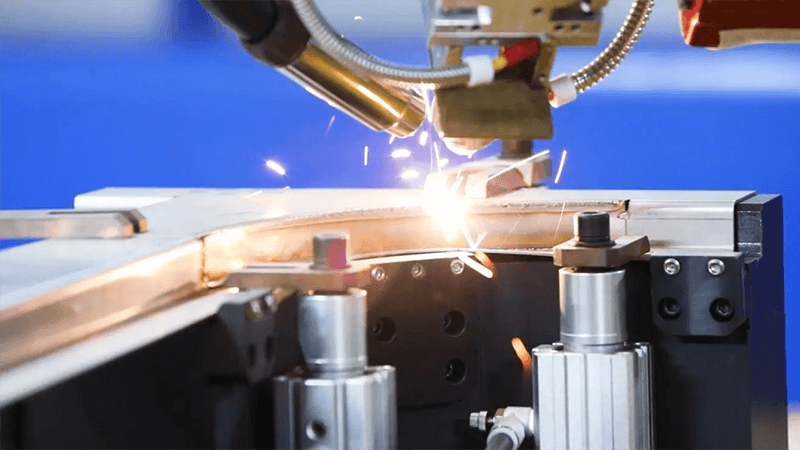
- Robot Arm Laser Welding Machines
Robot arm laser welding machines combine the flexibility of robotic arms with the precision of laser technology.
- Dynamic Clamping and Flexibility: These systems often utilize six-axis robots that can maneuver in three-dimensional space to weld complex geometries efficiently. This flexibility allows them to adapt to various part designs without needing extensive reconfiguration.
- High Power and Speed: Capable of using high-powered lasers (up to 6,000W), these machines can perform rapid welds on small or sensitive components such as battery tabs for electric vehicles. The remote laser welding technique minimizes mechanical movement while maintaining high-speed operations.
- Automation Benefits: Robot-assisted systems improve productivity by operating continuously without breaks. They can also dynamically adjust clamping tools based on part variations detected by vision systems, ensuring consistent weld quality across different production runs.
- Applications: Ideal for mass production scenarios where precision is paramount, robot arm laser welders are commonly used in industries such as electronics manufacturing and automotive assembly.
Speed and Precision: The Power of Laser Welding
One of the main reasons laser welding is so powerful is its speed. Traditional welding takes time—sometimes a lot of time. But laser welding can complete a weld much faster due to its concentrated energy source and precision. This increased speed means less downtime and higher production rates.
It also means that companies can meet tight deadlines, improve throughput, and reduce costs. But speed isn’t everything—precision matters, too. With laser welding, we can create tiny, delicate welds without worrying about damaging the surrounding area. This level of control is particularly valuable in industries like electronics and medical device manufacturing, where even the smallest imperfection can lead to product failure.
Traditional welding machines produce a lot of sparks and noise.True
Traditional welding is known for producing sparks and loud noise, in contrast to newer methods like laser welding.
Laser welding produces a lot of heat and increases the risk of burns.False
Laser welding generates less heat compared to traditional methods, making it safer for operators.
Cleaner, Safer, and More Efficient: How Laser Welding is Revolutionizing Manufacturing
Laser welding doesn’t just improve speed and precision—it also makes the welding process cleaner. Traditional welding methods produce a lot of heat, fumes, and sparks, creating potential hazards for workers. In contrast, laser welding produces less heat and creates less smoke, leading to a safer, cleaner work environment.
This is especially important in industries like aerospace or medical device manufacturing, where cleanliness is paramount. Imagine having to clean up after each weld in a traditional setup, or worse, dealing with the potential health risks of fumes. Laser welding solves these problems and provides a more sustainable and worker-friendly environment.
Furthermore, because laser welding can be automated, it reduces the need for manual labor, making the process more efficient and cost-effective in the long run. Automation also allows for repeatability, ensuring that every weld is consistent and of the highest quality. It’s like having a highly skilled welder on standby 24/7—without the downtime.

Laser Welding in Action: Examples from Different Industries
Laser welding isn’t just a theoretical innovation—it’s already being used across various industries. Take the automotive industry, for example. With the rise of electric vehicles (EVs), there’s an increasing demand for lighter, more durable parts. Laser welding allows manufacturers to join lightweight materials like aluminum and high-strength steels without compromising their structural integrity. This leads to stronger, lighter vehicles that are more fuel-efficient.
In the aerospace industry, where precision is everything, laser welding is used to create critical components like turbine blades and structural joints. The high level of control and minimal distortion make laser welding ideal for these applications, where even a small defect could be catastrophic.
Medical device manufacturers also rely on laser welding to create implants, surgical tools, and other sensitive equipment. The precision of laser welding ensures that these devices are both functional and safe for patients, minimizing the risk of failure during use.
The Future of Laser Welding: What’s Next?
So, what’s next for laser welding? Well, there’s no slowing down in sight. As technology continues to improve, laser welding will only get better. Advancements in laser sources, optics, and automation will make the process even more efficient and cost-effective. For example, fiber lasers are becoming more widely used due to their high power and excellent beam quality. These lasers offer greater energy efficiency and can work with a broader range of materials, including metals, plastics, and ceramics.
Furthermore, the integration of AI and machine learning into laser welding systems is taking things to the next level. These technologies will allow welding systems to learn from previous welds, adapting and optimizing the process in real-time for better results. The possibilities are endless, and I can’t wait to see how the industry continues to evolve.
Laser welding is only suitable for large industrial projects.False
Laser welding is adaptable for various scales of projects, from small to large, due to its precision and clean process.
Laser welding requires no post-welding cleaning because it’s mess-free.True
Since laser welding is cleaner and more precise, it often requires less post-welding cleaning compared to traditional methods.
Is Laser Welding Right for Your Business?
If you’re still on the fence about laser welding, you might be wondering: Is it worth the investment? The answer really depends on your business and the materials you’re working with. If you need high precision, speed, and a cleaner process, then laser welding is probably the way to go. But it’s not just about the technology—it’s about the overall impact on your bottom line.
Investing in laser welding technology could result in reduced costs, higher production rates, and better product quality. It’s a long-term investment that pays off over time. Plus, with the increasing demand for precision and quality in industries like aerospace, automotive, and electronics, having laser welding capabilities could give you a competitive edge.
Hot-selling Laser Welding Machines at Kirin Laser in 2024
Final Thoughts: The Laser Welding Revolution
In conclusion, laser welding is changing the industry for the better. With its speed, precision, and cleaner process, it’s no wonder that more and more companies are adopting this technology. Whether you’re in the automotive, aerospace, medical, or electronics industry, laser welding has the potential to improve your manufacturing process and help you stay ahead of the competition.
At Kirin Laser, we’ve seen firsthand how laser welding is transforming businesses, and we’re excited to help others take advantage of these innovations. As a sales engineer in the laser technology field, I can confidently say that laser welding is here to stay—and it’s going to keep getting better. So, if you’re looking for a way to level up your manufacturing, laser welding might just be the answer.
If you're curious about how laser welding can benefit your business, don’t hesitate to reach out. We’re always happy to discuss how this technology can help you improve your processes and achieve your goals.
References:
- "Understanding Laser Welding Prices: What to Expect", from Kirin Laser.
- "Laser Welded vs Traditional Welding: Pros and Cons", from Kirin Laser.
- "Why Choose an Air-cooling Fiber Laser Welding Machine?", from Kirin Laser.
- "Top Advantages of Using a Welder with Laser Technology", from Kirin Laser.
- "What makes a 4-in-1 hand-held laser welding machine a game-changer?", from Kirin Laser.
- "Understanding Laser Welds: A Comprehensive Guide", from Kirin Laser.
- "Portable Laser Welder", from FSL Laser.
- "Platform Automatic Fiber Laser Welding Machine | Welding Machine 1000w/1500w/2000w/3000w | 6 Axis", from Sparkle Laser.

